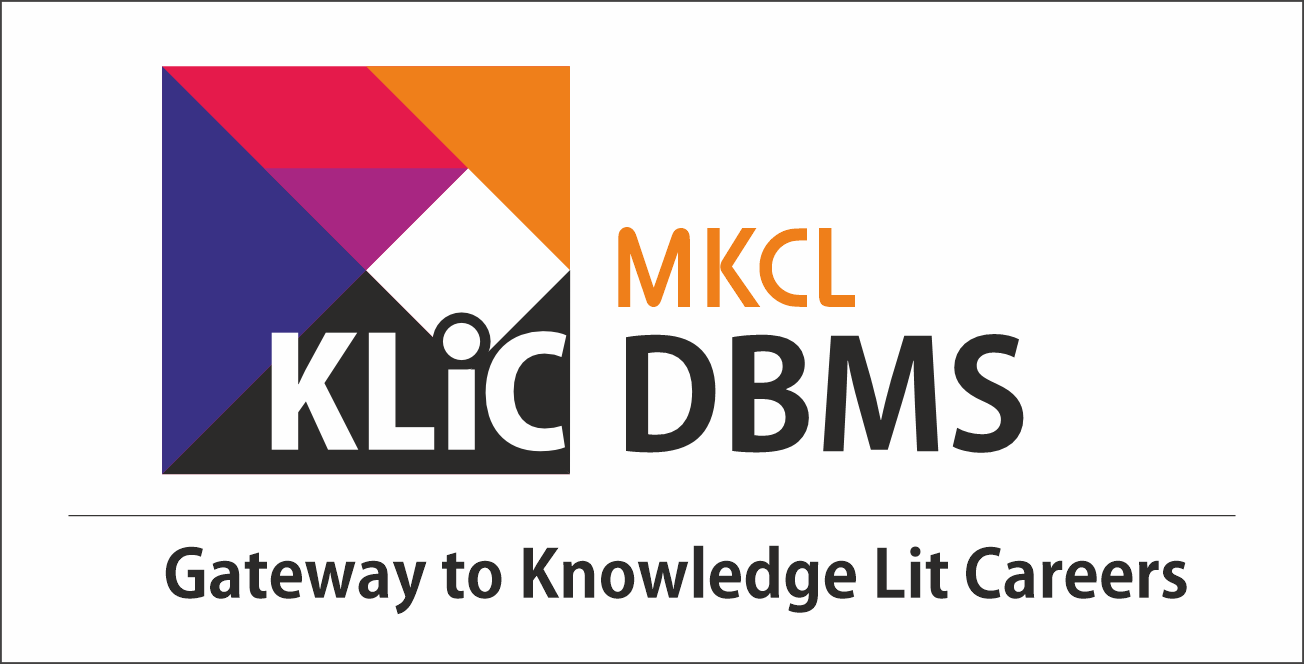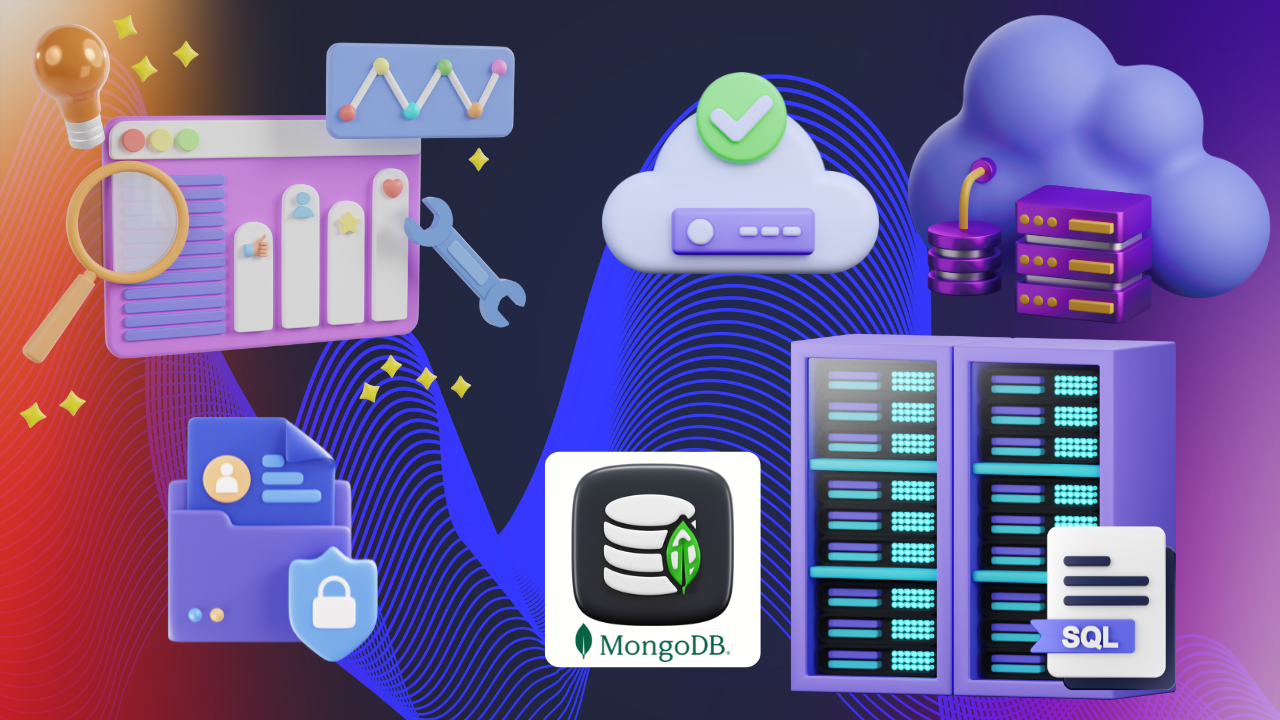- To introduce fundamental database management concepts, including architecture, data models, and interfaces.
- To explore Entity-Relationship modeling and relational schema design techniques.
- To develop proficiency in relational algebra operations and their role in query formulation.
- To cultivate practical skills in SQL, covering data definition, manipulation, and constraints.
- To understand integrity constraints, relationships, and their application in maintaining database consistency.
- To equip learners with the ability to map ER models to relational schemas and construct efficient database queries.

Database Management and SQL Mastery
Understand relational databases and master SQL for data manipulation and queries.
Introduction
What you'll learn ?
- Articulate the purpose and advantages of using DBMS in varied industries.
- Classify and differentiate data models, schemas, and instances.
- Design ER diagrams to model real-world systems with appropriate attributes, keys, and relationships.
- Apply concepts of relational integrity and implement various types of constraints.
- Convert conceptual designs into relational schemas and tabular representations.
- Master relational algebra operations like projection, selection, joins, and set theory operations.
- Execute SQL statements for defining, querying, and manipulating data structures.
- Map complex relationships (1:1, 1:N, M:N, multivalued) into relational designs and write efficient relational queries.
Syllabus
- Introduction
- History of DBMS
- Purpose of Database Systems
- Advantages of using the DBMS approach
- Disadvantages of using the DBMS approach
- DBMS and its applications: Enterprise Information & Banking and Finance
- Example of a Database
- Architecture of DBMS
- Data Models, Schemas and Instances
- Categories of Data Models
- Database Schema vs Database State
- Data-Manipulation Language (DML)
- Data-Definition Language (DDL)
- Database Administrators and Database Users
- Database Users and User Interfaces
- The Database System environment
- Database System Utilities
- Centralized and Client/Server Architecture for DBMS
- High-Level Conceptual Data Models
- Introduction to ER Model
- Symbols in ER Diagram
- Entity types
- Entity sets
- Attributes
- Entity-Set and Keys
- Relationship
- Relational Model Integrity
- CONSTRAINTS
- Keys in DBMS
- ER DIAGRAM
- Naming Conventions
- ER Design Issues
- Structural constraints Weak entity types
- Generalization
- Specialization
- Relational Model Concepts
- Informal Definitions
- Formal Definitions
- Structure of Relational Databases
- Database Schema
- Characteristics of Relations
- Relational Integrity Constraints
- Other Types of Data Constraints
- Domains, Attributes, Tuples and Relations
- Represent all the Entities and Relationships in Tabular Fashion
- PRELIMINARIES
- Selection and Projection
- Unary Operations
- The SELECT Operation
- PROJECT Operation
- Sequences of Operations and the RENAME Operation with an Example
- Set Theory Operations
- The UNION, INTERSECTION and MINUS Operations - Examples
- The CARTESIAN PRODUCT (CROSS PRODUCT) Operation
- Binary Relational Operations and additional relational operations
- List of Operators with Purpose
- Additional Relational Operations and Generalized Projection
- Relational Database Design using ER-to-Relational mapping
- Procedure to Create a Relational Schema from an Entity-Relationship (ER)
- Mapping of Binary 1: N Relationship Types
- Introduction
- SQL Data Definition and commands
- Operators and Expressions
Certificate
- MKCL provides certificate (for 30/60/90 hours courses) to the KLiC learner after his/her successful course completion.
Academic Approach
The Academic Approach of the course focuses on the “work centric” education i.e. begin with work (and not from a book !), derive knowledge from work and apply that knowledge to make the work more wholesome, useful and delightful. The ultimate objective is to empower the Learner to engage in socially useful and productive work. It aims at leading the learner to his/her rewarding career as well as development of the society.
Learning methodology
- Learners are given an overview of the course and its connection to life and work.
- Learners are then exposed to the specific tool(s) used in the course through the various real-life applications of the tool(s).
- Learners are then acquainted with the careers and the hierarchy of roles they can perform at workplaces after attaining increasing levels of mastery over the tool(s).
- Learners are then acquainted with the architecture of the tool or Tool Map so as to appreciate various parts of the tool, their functions and their inter-relations.
- Learners are then exposed to simple application development methodology by using the tool at the beginner’s level
- Learners then perform the differential skills related to the use of the tool to improve the given ready-made outputs.
- Learners are then engaged in appreciation of real-life case studies developed by the experts.
- Learners are then encouraged to proceed from appreciation to imitation of the experts.
- After imitation experience, they are required to improve the expert’s outputs so that they proceed from mere imitation to emulation.
- Finally, they develop the integral skills involving optimal methods and best practices to produce useful outputs right from scratch, publish them in their ePortfolio and thereby proceed from emulation to self-expression.
Evaluation Pattern
Evaluation Pattern of KLiC Courses consists of 4 Sections as per below table:
| Section No. | Section Name | Total Marks | Minimum Passing Marks |
|---|---|---|---|
| 1 | Learning Progression | 25 | 10 |
| 2 | Internal Assessment | 25 | 10 |
| 3 | Final Online Examination | 50 | 20 |
| Total | 100 | 40 | |
| 4 | SUPWs (Socially Useful and Productive Work in form of Assignments) | 5 Assignments | 2 Assignments to be Completed & Uploaded |
MKCL’s KLiC Certificate will be provided to the learner who will satisfy the below criteria:
- Learners who have successfully completed above mentioned 3 Sections i.e. Section 1, Section 2 and Section 3
- Additionally, learner should have completed Section 4 (i.e. Section 4 will comprise of SUPWs i.e. Socially Useful and Productive Work in form of Assignments)
- Learner has to complete and upload minimum 2 out of 5 Assignments
Courses Fee Structure from 01 July, 2025 Onwards
KLiC 30 hour course fee applicable from 01 July, 2025 all over Maharashtra| KLiC Course Duration | MFO: MKCL Share (Including 18% GST) |
ALC Share (Service Charges to be collected by ALC) |
|---|---|---|
| 30 hours | Rs. 300/- | Rs. 1,500/- |
Important Points:
* Above mentioned fee is applicable for all Modes of KLiC Courses offered at Authorised Learning Center (ALC) and at Satellite Center
* Total fee is including of Course fees, Examination fees and Certification fees
* MKCL reserves the right to modify the Fee anytime without any prior notice
* Above mentioned fee is applicable for all Modes of KLiC Courses offered at Authorised Learning Center (ALC) and at Satellite Center
* Total fee is including of Course fees, Examination fees and Certification fees
* MKCL reserves the right to modify the Fee anytime without any prior notice
